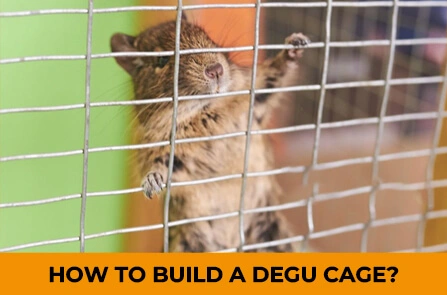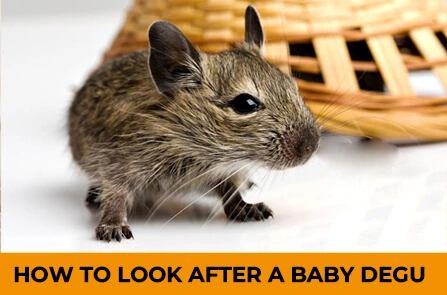
Degu are the rodents that are being kept as pets by many pet enthusiasts because of their unique appearance and curious nature. These rodents are susceptible to different diseases. Therefore, caring for these pets for a longer, healthier, and happier life is essential. Please provide them with proper housing, bedding, dental care, diet, and dust baths. Examine their behavior and identify the symptoms of diseases on time to eliminate the chances of health risks. Take them to the veterinary care if you notice any behavioral changes.
These little fluffs’ charming, curious, and playful nature has made them a center of attraction for many pet enthusiasts. They have been kept as pets for many years, but like all other rodents, they need a spacious and comfortable enclosure to thrive. One such aspect is to provide them with a spacious cage that ensures their safety and enrichment. You can get a degu cage from the market, available in different designs and sizes, but it is a little costly. You can also DIY your degu cage with little effort, which is cost-effective and entertaining. Let’s move further and build an enclosure for your fluffy companion.
Steps To Build A Degu Cage
Below are some simple and easy steps to construct an enclosure for your little companion.
1. Planning And Design
The first step is to do a thorough planning before beginning the construction. Estimate the available space, the number of degu you keep, and the specific features you want to implement. It is advised to follow the rule of thumb that offers at least 12 square feet of floor space for every pair. It is essential to ensure your little companion’s safety and their home’s durability. Using treated wood and plastic to build their cages is not recommended because such materials can harm degus, who can chew them. You should use pet-safe materials such as untreated wood and metal to develop their enclosure.
2. Essential Supplies & Equipment
Below are the necessary tools and materials to construct their cage.
- Screw
- Nails
- Fasteners
- Metal Mesh (For ventilation)
- Untreated wood
- Latches & Hinges
- Saw
- Drill
- Wire Cutters
- Sand Paper
- Sealent (Non-Toxic)
3. Building The Enclosure
- The first step in constructing their cage is to build a frame using untreated wood, which is present in its natural state.
- According to your design needs, cut the pieces of wood and join them together with the help of screws and nails.
- Ensure the frame you have made is strong, secure, and sturdy. It will act as a substructure for the rest of the cage.
- The next step is to create the walls and ceilings of the cage by connecting the metal mesh to the frame.
- Use a wire cutter and cut the excessive mesh to the size. Ensure there are no gaps in the cage for your little one to escape or get trapped.
- Ensure the mesh is secure to the frame by using a screw, and install the doors with the help of hinges or latches.
- Make sure there are not enough gaps for these little creatures to escape, and make doors large enough for cleaning.
- Here, you are done with a safe, cost-effective, and secure home building for your degu.

Occupying Cage With Enrichment
After building the cage’s basic structure, it is time to populate it with necessities to keep the animals happy and busy.
- Motivate them to climb and exercise by adding stages and slopes.
- They fulfill their instinct for chewing by adding chewy products and tunnels.
- Ensure privacy and comfort by incorporating hideaways and nesting boxes.
- To prevent mess, little food and water containers are securely attached to the cage bars.
- Ensure their grooming and hygiene by adding a dust bath.
- Add hanging toys and branches that will act as a ladder to step up to different levels.
It is advised to clean the degu cage regularly to ensure hygiene and health.
It’s A Wrap!
Constructing a degu cage is an entertaining experience that allows you to customize your living space according to your needs. In the market, cages are available for these pets in different sizes and designs, but you can do it at home cost-effectively. The tools and materials needed for crafting this project are drill, saw, screw, nails, and fasteners: untreated wood, mesh, and some others. Following the above steps with proper planning and design will help you to build your living space. Besides this, you can ensure their happiness by adding different accessories and enrichment such as chewy items, branches, hanging toys, and nesting boxes.













